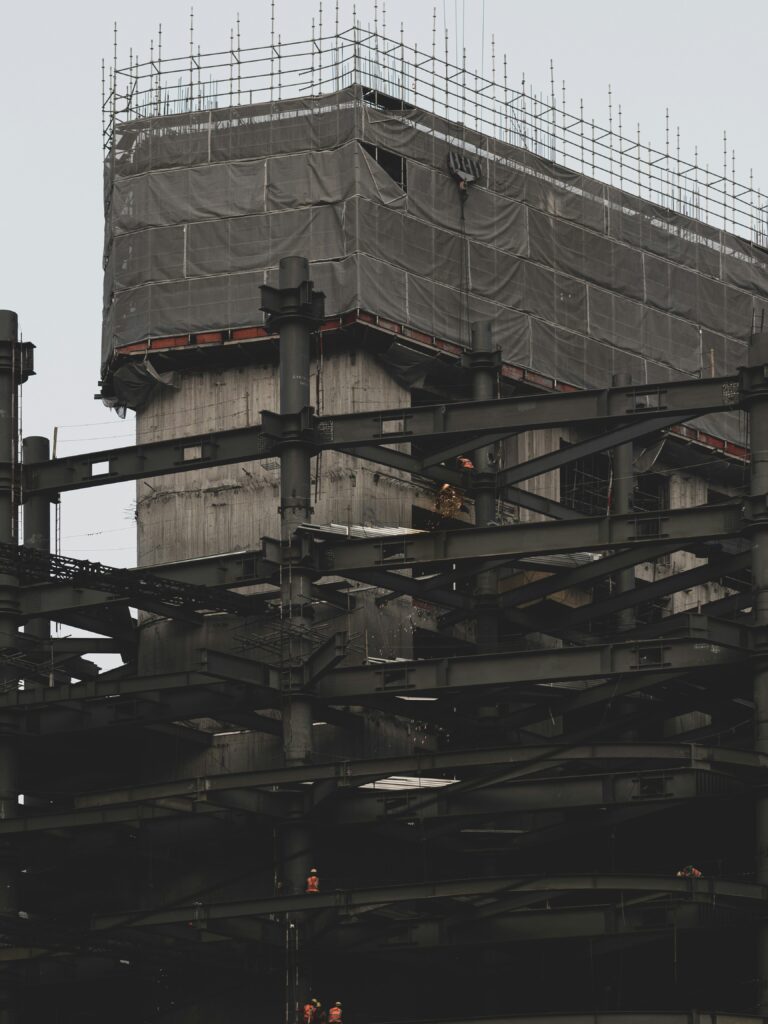
In preparation for a recent project, I was carefully reviewing the structural consultant’s proposal to confirm their understanding of our project scope and to align expectations for coordination and documentation. It struck me that although I have successfully coordinated several large-scale projects with structural consultants, I had never paused to fully understand precisely what their deliverables should include at each project phase. I had always taken for granted that, as professionals, they inherently knew what was required – but if I’m honest, I couldn’t clearly define those requirements myself, particularly across each distinct phase of design and construction.
When trying to decipher deliverables directly from consultant proposals, architects often encounter vague descriptions that leave more questions than answers. For example, a typical structural engineer’s explanation for the Schematic Design Phase includes activities such as participating in idea exchanges, preparing preliminary designs, and establishing structural criteria, but the language is general enough to obscure exact expectations. While these descriptions suggest comprehensive coverage, they often lack the clarity or specific detail necessary for architects to immediately understand the full scope and expectations of deliverables – clarity that significantly informs your project planning schedule and overall work plan.
This realization highlighted a significant gap in my understanding: the absence of explicitly defined expectations for structural engineering deliverables at critical milestones. It’s important to recognize that at the proposal stage, not every detail of the final document set needs or should be explicitly outlined – and that’s completely acceptable. If questions arise, reaching out directly to your consultant is always advisable. Nevertheless, having a solid grasp of what to generally expect at each project milestone is simply good practice, enabling proactive rather than reactive coordination and minimizing potential misunderstandings or misaligned efforts.
This blog post aims to bridge that gap by clarifying what architects should reasonably expect from structural engineers at each project phase, facilitating better communication and more streamlined coordination. We’ll begin by defining who the structural consultant is, the range of services they typically provide, and why it’s crucial to thoroughly understand their role. Then, we’ll dive deeper into specific deliverables expected during each project phase – covering documentation, QA/QC procedures, BIM modeling expectations, and structural analysis tools. The goal is to empower you, as a project architect, with the knowledge and confidence to set clearer expectations, enhance collaboration, and ultimately achieve better outcomes on your projects.
Who Is the Structural Consultant and Why Is It Crucial for Architects to Understand Their Role?
The structural consultant – often referred to as the structural engineer of record—is responsible for ensuring buildings safely withstand gravity, wind, seismic forces, and environmental conditions. Beyond calculations and detailing, they are licensed professionals (PE) with specialized knowledge in structural or civil engineering, supported by extensive experience in designing foundational, framing, and lateral systems. Structural consultants offer a broad range of services, including structural design, peer review, adaptive reuse and renovation, special inspections, forensic engineering, and more. Their involvement typically spans the entire project lifecycle – from initial concept design through construction oversight – making their expertise critical in translating architectural concepts into practical, code-compliant realities.
For architects, clearly grasping the structural consultant’s role is critical for effective collaboration. Misunderstandings or vague assumptions about their scope can disrupt schedules and coordination efforts. The structural engineer’s primary purpose isn’t to limit architectural design but to support and enable it, ensuring our visions comply with essential codes and standards like the IBC and ASCE 7 to name a few. Defining expectations clearly from the start ensures alignment in project goals, improves workflow, and ultimately leads to better projects overall.
Understanding Phase Deliverables: What Matters Most (For Traditional Design-Bid-Build Projects)
1. Schematic Design (SD): Framing the System
Before we dive in, it’s worth noting that this outline is most applicable to traditional Design-Bid-Build (DBB) project delivery. We fully recognize that alternative approaches – such as early release packages, design-assist, or integrated project delivery (IPD) – may shift the nature and timing of structural deliverables. However, to keep this post focused and digestible, we’ll concentrate on the typical DBB workflow. Check out the downloadable resources at the end.
At the schematic design stage, the structural engineer’s role is to define the big-picture approach to the structural system – not to produce full details. Based on patterns observed across several large-scale institutional projects, here’s what you should generally expect:
- Structural Design Criteria: Preliminary criteria outlining codes (IBC, ASCE 7, ACI, etc.), major loads (gravity, wind, seismic), and basic performance goals (deflection, vibration).
- Conceptual System Studies: Framing plans or diagrams exploring system options (steel vs. concrete), lateral load strategies, and preliminary member layouts.
- Coordination Information: Inputs for geotechnical studies and spatial coordination.
- Cost Planning Support: Preliminary tonnage or quantity estimates to assist with early budgeting.
- Preliminary Drawings: Expect, general structural notes, design criteria, foundation and superstructure framing concepts, sections, and representative details.
- Outline Specifications or Structural Narrative: General description of the structural systems and materials; enough for budgeting.
Tip: SD deliverables won’t answer every question but should give enough to shape your design decisions and prepare for cost planning.
2. Design Development (DD): Refining and Coordinating the Structure
In DD, the structural engineer advances from concepts to a coordinated structural system. The deliverables ensure the system integrates smoothly into the architectural and consultant packages.
- Refined Framing Plans: Developed framing layouts showing preliminary member sizes and system coordination.
- Foundation Plans: Reflecting geotechnical inputs and resolving foundation types.
- Key Sections & Typical Details: Illustrating system behavior, lateral load path, and key interfaces.
- Updated Load & Tonnage Info: More precise estimates for budgeting.
- Coordination Drawings: Addressing architectural alignment (shafts, openings, façade supports).
- Outline Specifications: Structural Steel and Concrete sections
Tip: DD is where most coordination issues are solvable. Don’t wait until CDs to fully review.

How Structural Engineers Get It Done: Tools Behind the Deliverables
Behind every drawing or set of calculations, structural engineers rely on specialized tools to analyze and design the building systems. These tools range from industry-standard software to custom spreadsheets, depending on the office and project complexity.
Common tools include:
- RAM Structural System: For overall building modeling and steel design.
- RAM Concept: Used for concrete slab and concrete beam design.
- STAAD Pro: Often applied to unique structures like canopies.
- ETABS: Dedicated to analyzing and designing lateral systems (shear walls, braced frames).
- SP Column: For individual column design under combined axial and bending loads.
- Excel Spreadsheets: Widely used for custom beam and column calculations and to automate repetitive tasks.
- Hilti Profis: For anchor bolt and fastener design.
- Tekla Structures: Primarily used for steel connection detailing and generating shop drawings.
- Revit: Typically used to integrate the structural model with the architectural model for coordination. Models should be expected for each phase.
Some engineers still prefer to supplement software analysis with hand sketches and calculations, especially in early phases where they are exploring concepts. For architects, it’s helpful to understand that behind every framing plan is a carefully developed analysis model – adjustments often require more than just moving lines in Revit.
Understanding these tools is helpful not only for appreciating the work behind the deliverables but also for setting realistic expectations about what structural drawings represent at each phase. As these tools refine and validate the design, the output transitions into what we as architects typically engage with next – the Construction Documents (CDs).
3. Construction Documents (CD): Documenting for Permit and Pricing
By the CD phase, your structural engineer is fully documenting the project for permitting and construction.
- Fully Developed Drawings: Foundation and framing plans, sections, connection details, and member sizes.
- Schedules: Column schedules, shear wall schedules, reinforcing details.
- Specialty Details: Stairs, elevator pits, roof dunnage, equipment supports.
- QA/QC Ready: Drawings are ready for issuance.
- Final Specifications: Structural Steel and Concrete sections
Tip: Check for integration of architectural features like canopy supports, slab edges, and non-typical conditions.
4. Construction Administration (CA): Support During Construction
During CA, the structural engineer helps interpret documents, review shop drawings, and respond to RFIs.
- Shop Drawing Reviews: Verifying compliance with the design intent.
- RFI Responses: Resolving field issues promptly.
- Site Visits: As needed, to observe compliance with the design.
Tip: Keep your structural engineer engaged during construction, especially when field changes impact structure.
QA/QC Expectations for Structural Deliverables
As structural documents progress through DD and CD phases, internal quality assurance and quality control (QA/QC) become essential. Structural consultants typically perform internal reviews to ensure that deliverables are coordinated, code-compliant.
Key QA/QC topics architects should expect to be addressed include:
- Alignment of grids with architectural and civil drawings.
- Confirmation of major openings, shaft locations, and mechanical equipment loads.
- Consistency of structural systems across plans, sections, and details.
- Completeness of structural notes, schedules, and key details.
- Identification of any unresolved coordination issues.
Tip: Architects benefit greatly from requesting a pre-issue review with the structural engineer, catching misalignments before CDs are issued.
The Structural Engineer’s Role in Sustainability
Sustainability is no longer a specialty – it’s an essential consideration in nearly every project. The structural engineer plays a crucial role in helping the design team meet sustainability goals without compromising safety or constructability. Whether your project is targeting LEED certification, focusing on reducing embodied carbon, or simply aiming for material efficiency, the structural engineer is a key partner.
At every phase, structural engineers can:
- Optimize structural systems to reduce material usage.
- Explore alternatives like high-recycled-content steel or low-carbon concrete mixes.
- Evaluate the feasibility of adaptive reuse or building repurposing.
- Support lifecycle analysis by providing tonnage and material data early.
While this post focuses on traditional deliverables and processes, it’s important to recognize that structural decisions have a direct impact on sustainability outcomes. Early engagement on sustainability goals will lead to more integrated and effective design solutions.

Wrapping Up: Why Clear Expectations Matter
Understanding the typical deliverables from your structural engineer isn’t just about paperwork – it’s about enabling better collaboration, smoother project delivery, and fewer surprises. Each phase of design, from early criteria development to construction support, plays a critical role in shaping a project’s success.
While every project and consultant may vary, having a baseline understanding of what to expect helps you, as an architect, plan more effectively, coordinate more thoroughly, and deliver higher-quality results for your clients.
And remember – you don’t need to know how to perform structural analysis, but you do need to know when to ask the right questions.
Downloadable Resources
To help you put these insights into practice, we’ve provided several downloadable tools you can use during your next project:
- 📄 Information Required by Others – What your structural engineer needs from you to get started.
- 📄 Typical Deliverables for Concrete Frame – Phase-by-phase summary tailored to concrete structures.
- 📄 Typical Deliverables for Steel Frame – Phase-by-phase summary tailored to steel structures.
- 📄 Checklist for Structural Documents – A QA/QC tool to help you review structural sets before submission.
Each file is available for download directly from this post. Use them to clarify expectations, guide consultant coordination, and improve the quality of your documentation.
Be the ONE